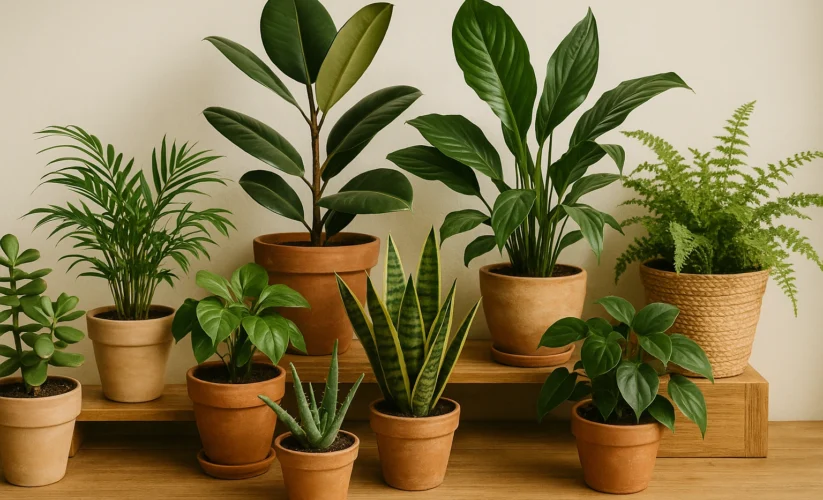
10 High-Oxygen Bedroom Plants for Better Sleep & Fresh Air
A good night’s sleep isn’t just about a comfy bed or dark curtains. It’s also about the air you breathe. Some houseplants not only clean your indoor air by removing bad stuff but also give off more oxygen, especially at night.
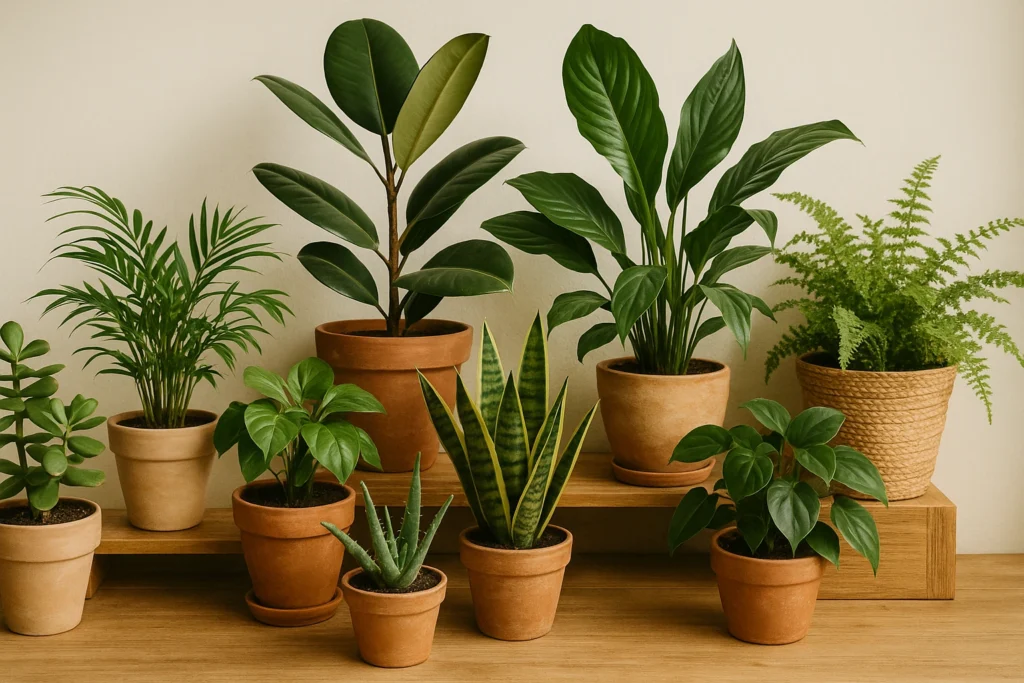
These green friends can help you sleep better, feel less stressed, and make your bedroom look nicer. If you want to make your sleep space healthier and easier to breathe in, here are 10 great bedroom plants that give off lots of oxygen.
1. Aloe Vera
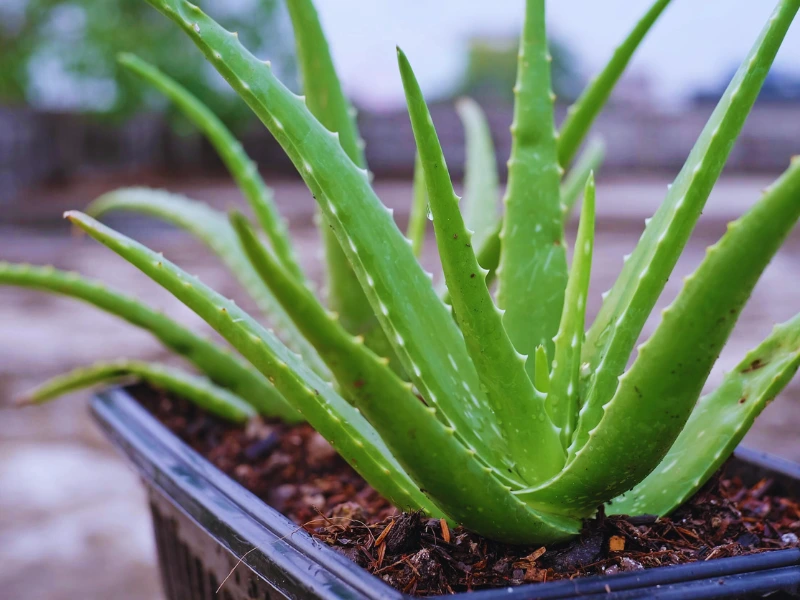
Aloe vera is known as a healing plant for cuts and burns, but it’s also excellent at making oxygen. Just like the snake plant, aloe vera releases oxygen at night, making it perfect for your bedroom.
This juicy plant doesn’t need much attention. In fact, it likes to be left alone. It prefers bright light and doesn’t need much water. You should water it only when the soil is completely dry, usually every 2–3 weeks, or even less in winter.
Its thick, spiky leaves store water and also clean the air by removing harmful things like formaldehyde and benzene. So, not only do you get cleaner air for better sleep, but if you ever need to soothe a sunburn or a small cut, you’ll have a natural remedy right there on your nightstand.
Care Level: Easy
︎Light Needed: Bright, direct or indirect light. A sunny window is ideal.
︎Watering: Water deeply but rarely. Let the soil dry out completely between watering.
︎Special Benefit: Releases oxygen at night and has medicinal uses.
Also Read– Top 10 Natural Foods cure Acidity
2. Rubber Plant (Ficus elastica)
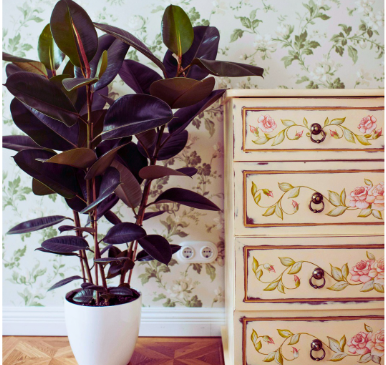
The rubber plant is not only a stylish plant that stands out, but it’s also a powerful air cleaner. It removes formaldehyde and other bad chemicals from your indoor air and adds to the oxygen levels, helping you breathe easier while you sleep. Formaldehyde can be found in many household products and furniture, so having a plant that targets it is a big plus.
Rubber plants like medium to bright indirect light. They also do well with consistent but moderate watering. You should water them when the top two inches of soil feel dry. Make sure the pot has good drainage to avoid root rot. They also like a bit of humidity, so misting their large leaves sometimes can be beneficial.
With its big, shiny leaves and upright shape, it brings bold greenery to your bedroom. Plus, it needs surprisingly little effort to keep it healthy and looking good. It’s a fantastic choice for both clean air and a strong visual impact on your room.
︎Care Level: Easy to Medium
︎Light Needed: Medium to bright, indirect light. Tolerates lower light but grows best with more light.
︎Watering: Water when the top 2 inches of soil are dry.
︎Special Benefit: Great air purifier with bold, attractive leaves.
3. Bamboo Palm (Chamaedorea seifrizii)
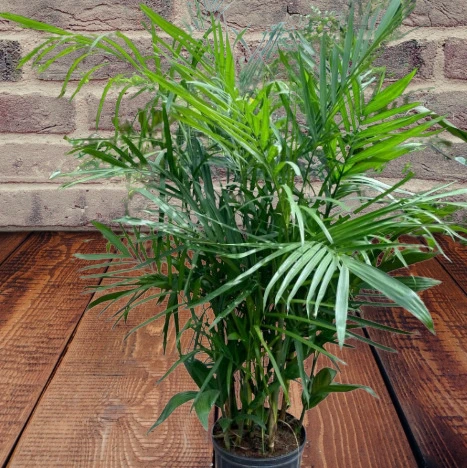
The bamboo palm is a graceful, tall plant that is excellent at removing bad stuff from the air and adding moisture to dry indoor air. It’s especially good at filtering out chemicals like benzene and trichloroethylene. While it mainly gives off oxygen during the day, its air-cleaning abilities help you breathe better and sleep more soundly over time.
Bamboo palms are best suited for medium to bright indirect light and like soil that stays moist. They grow slowly but steadily and can get quite tall if they have enough space, reaching up to 6–12 feet indoors. Their tall, slender stems and feathery leaves give your bedroom a tropical, relaxing feel.
They are also known to be relatively safe for pets compared to some other palms. Regular misting can help maintain the humidity they love, especially if your home’s air is very dry.
︎Care Level: Medium
︎Light Needed: Medium to bright, indirect light. Can tolerate lower light.
︎Watering: Keep the soil consistently moist, but not soggy.
︎Special Benefit: Good air purifier and natural humidifier.
Also Read – Top 10 Fast Food That Are Healthy and Delicious
4. Snake Plant (Sansevieria trifasciata)
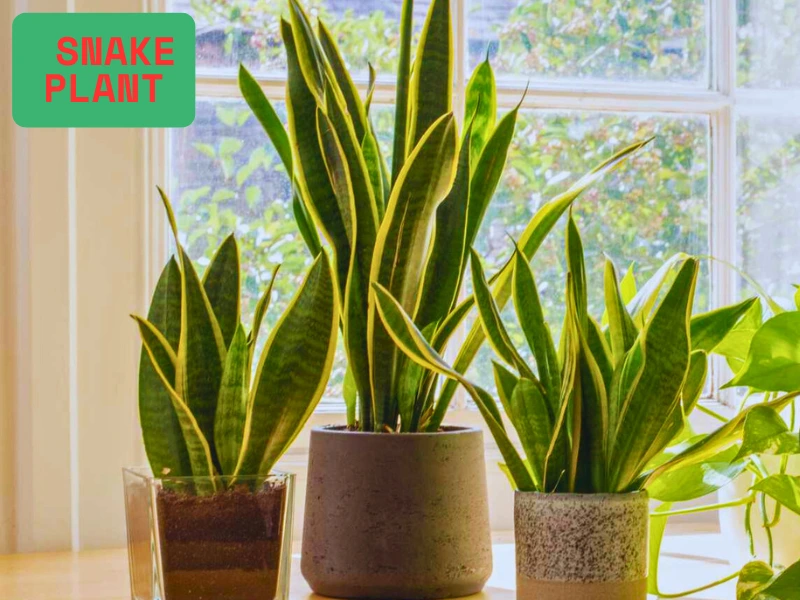
Snake plant, also called mother-in-law’s tongue, is one of the best plants for adding oxygen to your bedroom. Most plants make oxygen during the day, but the snake plant is special. It does something called “CAM photosynthesis,” which means it gives off oxygen even while you are sleeping at night.
This plant also cleans the air by taking out harmful things like formaldehyde and benzene. These are common chemicals found in homes from things like furniture, paint, and cleaning products.
Snake plants are tough, don’t need much care, and are very hard to kill. They are great for people who are new to plants or don’t have a lot of time. They like dim light and don’t need much water, maybe once every two to four weeks. You should let the soil dry out completely between waterings. If you water too much, the roots can rot.
Their long, sword-like leaves stand up straight, giving your bedroom a simple, modern look. While looking stylish, they quietly make your air cleaner and better for sleeping. They are also known to help with allergies by trapping dust.
︎Care Level: Very Easy
︎Light Needed: Low to bright, indirect light. They can handle many different light levels but prefer brighter spots.
︎Watering: Water only when the soil is completely dry, usually every 2–4 weeks. Less in winter.
︎Special Benefit: Releases oxygen at night.
5. Peace Lily (Spathiphyllum)
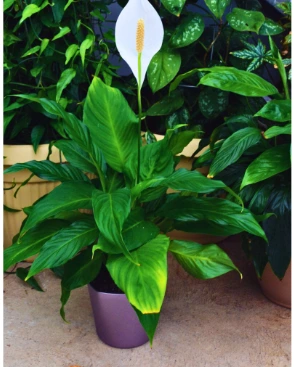
With its pretty white flowers and shiny green leaves, the peace lily makes any bedroom look more elegant while cleaning the air. It filters out bad chemicals like benzene, trichlorethylene, and formaldehyde. These are often found in cleaning products, paints, and synthetic materials. It also helps make the indoor air more humid.
While it doesn’t give off a lot of oxygen at night, its ability to clean the air is very helpful for healthier breathing and better sleep. Cleaner air means your body doesn’t have to work as hard to filter pollutants, allowing for more restful sleep.
Peace lilies like dim to medium light and soil that stays moist. Don’t let them sit in soggy water, but don’t let them dry out completely either. They are pretty good at telling you when they need water, as their leaves will start to droop a bit. Once you water them, they usually perk right back up.
Just be careful if you have pets, as this plant can be a little bit harmful if eaten. Keep it out of their reach to be safe.
︎Care Level: Medium
︎Light Needed: Low to medium, indirect light. Too much direct sun can burn its leaves.
︎Watering: Keep the soil consistently moist. Water when the top inch of soil feels dry.
︎Special Benefit: Excellent air purifier, removing many common toxins.
6. Spider Plant (Chlorophytum comosum)
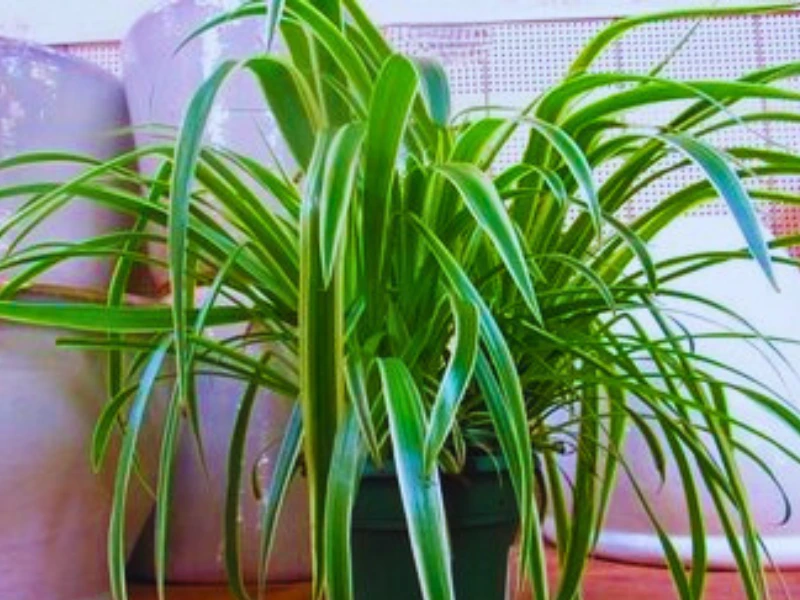
Spider plants are famous for cleaning the air and are super easy to take care of, making them great for bedroom corners or hanging from the ceiling. They get rid of bad stuff like carbon monoxide and formaldehyde from the air while also increasing oxygen levels.
Their arching leaves with green and white stripes add a fun look to your room. They are incredibly easy to care for, handling a bit of neglect, low light, and even some dry periods between waterings. This makes them perfect for busy people or those who sometimes forget to water their plants.
A really cool thing about spider plants is that they grow little baby plants called “pups” or “spiderettes” that hang down from the parent plant. You can easily cut these off and plant them to grow new spider plants. This means you can have more clean air plants all around your home for free!
︎Care Level: Very Easy
︎Light Needed: Indirect light, from low to bright. Avoid direct sun.
︎Watering: Water thoroughly when the top inch of soil is dry. They don’t mind drying out a bit.
︎Special Benefit: Excellent air purifier and produces many “babies” for more plants.
7. Gerbera Daisy (Gerbera jamesonii)
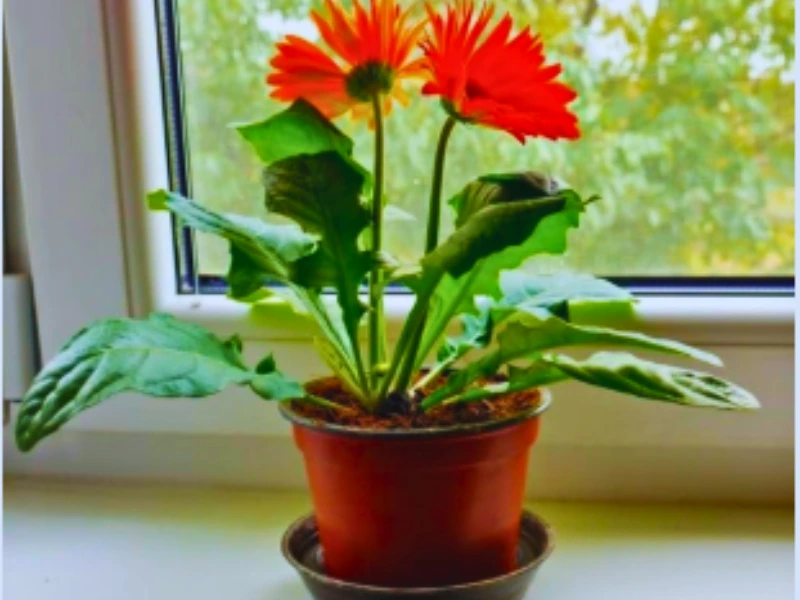
Most flowering plants only give off oxygen during the day, but Gerbera daisies are special because they keep doing it at night. This makes them one of the few flowering options you can have in your bedroom that actively helps your air quality overnight.
These bright and cheerful flowers also clean the air by taking out harmful things like benzene and trichlorethylene. These chemicals can come from things like inks, plastics, and dry cleaning.
Gerbera daisies like bright, indirect light and soil that is a little bit moist. They can be a bit more demanding than some other plants on this list. They need good airflow to prevent problems like mold and prefer steady temperatures. You might need to check their soil daily in warmer months.
However, their happy colors and the way they help you sleep make them worth the extra effort. They can truly brighten up your sleeping space and support a healthier night’s rest. They are often sold as temporary indoor plants, but with proper care, they can last a long time.
︎Care Level: Medium to High
︎Light Needed: Bright, indirect light. Needs a lot of light to bloom well.
︎Watering: Keep soil slightly moist but not soggy. Good drainage is key.
︎Special Benefit: Releases oxygen at night and adds vibrant color.
8. Areca Palm (Dypsis lutescens)
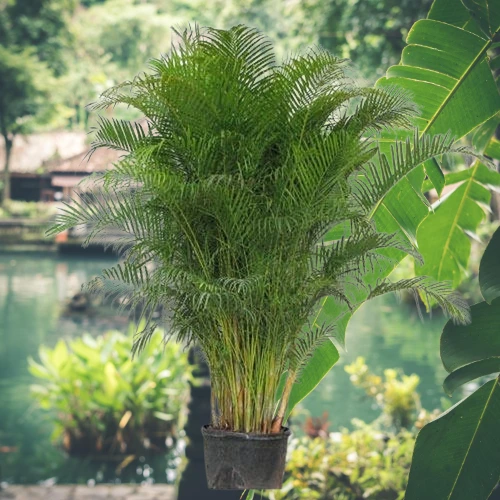
The Areca Palm is more than just a beautiful plant that reminds you of a tropical place. It’s also a strong natural humidifier and helps boost oxygen levels. This leafy, feathery palm gives off a lot of oxygen during the day. It also adds moisture to the air, which can help if you have dry skin or trouble breathing because the air is too dry. This is super helpful in bedrooms where heaters or air conditioners make the air dry.
Areca Palms like bright, but not direct, sunlight. They also need the soil to stay a bit moist, but not soggy. So, you should water them regularly, but make sure the pot has good drainage. It’s a good idea to water when the top inch or two of soil feels dry. They also like a bit of humidity, so misting their leaves once in a while can help, especially in dry climates.
Their gentle, arching leaves add a touch of class and peace to any bedroom, big or small. They can grow quite tall, making them a great statement plant if you have the space.
︎Care Level: Medium
︎Light Needed: Bright, indirect light. Direct sun can burn their leaves.
︎Watering: Keep the soil consistently moist, but not waterlogged. Water when the top inch of soil is dry.
︎Special Benefit: Great at adding moisture to the air and releasing oxygen during the day.
9. Pothos (Epipremnum aureum)
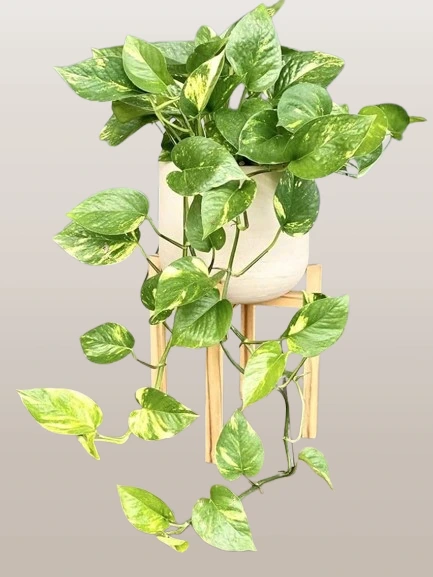
Pothos, sometimes called devil’s ivy, is a trailing vine that does well in dim light and is excellent at filtering out bad chemicals like carbon monoxide and formaldehyde. While it doesn’t give off oxygen at night like aloe or snake plants, its overall help in cleaning the indoor air makes it a good friend to have in your bedroom. Cleaner air means fewer irritants for your respiratory system, which can lead to more restful sleep.
Pothos is almost impossible to kill, grows quickly, and looks amazing hanging from pots or spilling down from shelves. Its long, leafy vines can create a calming, natural feel in your room. It comes in various types with different leaf colors, from solid green to variegated with yellow or white.
Just water it once a week or when the soil feels dry, and trim it now and then to keep it full and healthy. It’s a very forgiving plant, perfect for beginners or those who might forget to water sometimes.
︎Care Level: Very Easy
︎Light Needed: Low to bright, indirect light. Can tolerate very low light.
︎Watering: Water when the top 2 inches of soil are dry. Less in winter.
︎Special Benefit: Super easy to care for and an effective air purifier.
10. ZZ Plant (Zamioculcas zamiifolia)
The ZZ plant is perfect for bedrooms because it can handle very dim light and doesn’t need much watering. While it doesn’t give off oxygen at night, its strong, waxy leaves help remove harmful things and dust from the air.
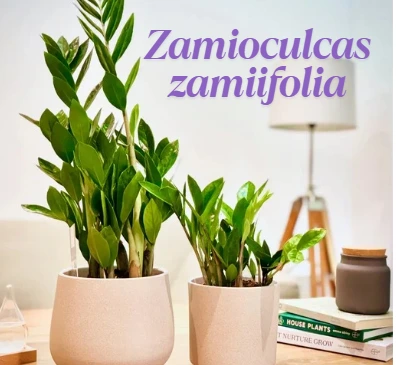
ZZ plants are almost impossible to destroy, which makes them great for busy people or those who are new to owning plants. They can go for weeks without water and still look good. In fact, overwatering is the most common way to kill a ZZ plant.
With their shiny, dark green leaves and upright growth, they add a simple, calm look to your bedroom décor. They are also a favorite for good feng shui, believed to bring good luck and calm energy into a space. Its low maintenance and striking appearance make it a top choice for any bedroom.
︎Care Level: Very Easy (beginner-friendly)
︎Light Needed: Low to bright, indirect light. Tolerates very low light conditions.
︎Watering: Water thoroughly but infrequently. Let the soil dry out completely between watering, usually every 2–4 weeks.
︎Special Benefit: Extremely low maintenance and helps remove dust and pollutants.






